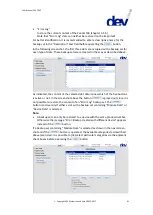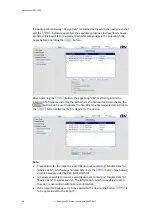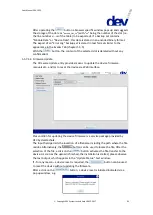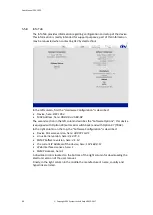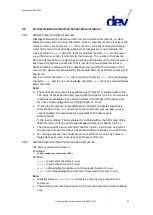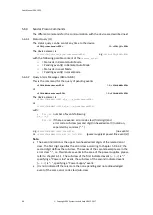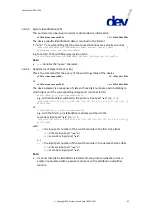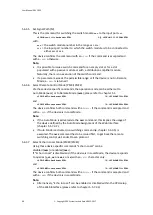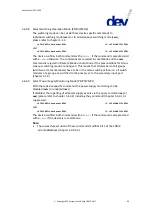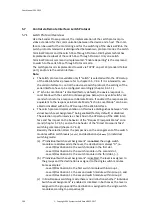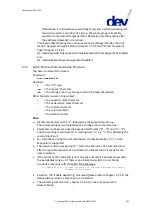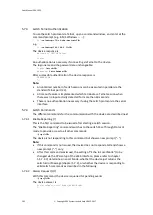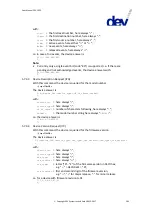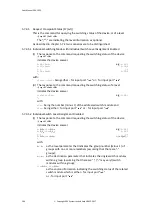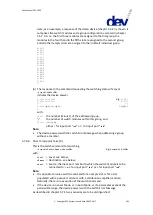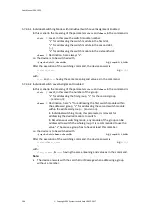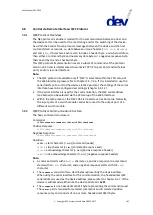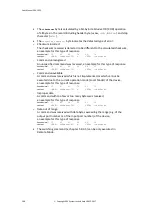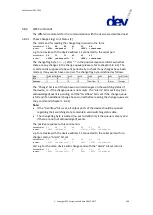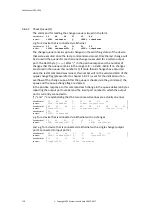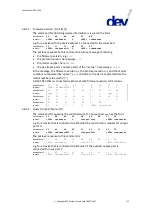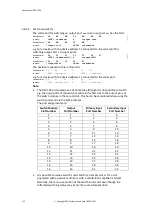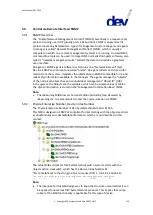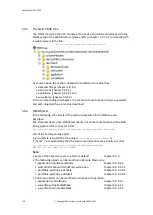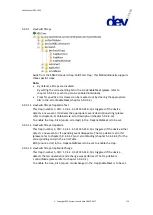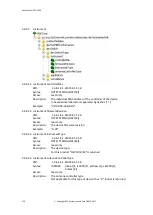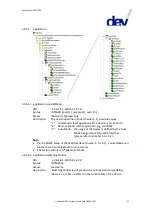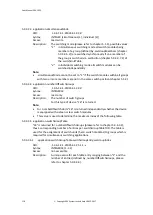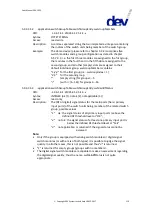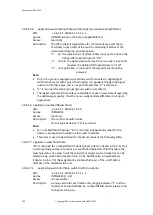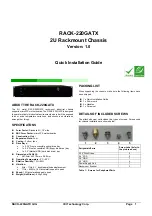
User Manual DEV 1953
Copyright DEV Systemtechnik GmbH 2015-2017
105
Here, as an example, a response of the demo device (chapter 3.3.2) is shown. It
comprises five switch modules and a group configuration as stated in chapter
5.5.7.3.3. I.e. the first three modules are assigned to the first group, the
modules in the fourth and in the fifth slot are assigned to the second group,
and all other (empty) slots are assigned to their default individual group:
S:00,1
S:01,1
S:02,1
S:10,1
S:11,1
S:50,0
S:60,0
S:70,0
S:80,0
S:90,0
S:A0,0
S:B0,0
S:C0,0
S:D0,0
S:E0,0
S:F0,0
>_
(ii) The response to the command requesting the switching status of a level
>
@
<sp>
S?<Lvl>
<CR>
initiates the device answer
S:<Lvl>0,<Src0>
e.g.
S:00,1
S:<Lvl>1,<Src1>
S:01,1
(…)
(…)
S:<Lvl>
(y-1)
,<Src
(y-1)
>
S:0
(y-1)
,0
>_
with:
<Lvl>
the number (minus 1) of the addressed group,
"
y
"
the number of switch modules within this group, and
<Src1>
…
<Src
(y-1)
>
either
0
for input port "
In A
" or
1
for input port "
In B
".
Note:
The device answers with the Leitch Error Message when addressing a group
without a member.
5.7.4.6
Direct Crosspoint Take (X:)
This is the Leitch command for switching
>
@
<sp>
X:<Lvl>/<Dest>,<Src>
<CR>
e.g.
@
<sp>
X:0/0,1
<CR>
with:
<Lvl>
= Level, see below;
<Dest>
= Destination, see below;
<Src>
= Source, the input port number to which the switch module is to be
connected to, i.e.
0
for input port "
In A
" or
1
for input port "
In B
".
Note:
It is possible to issue a switch command for an empty slot or for a slot
populated with a passive module or with a distribution amplifier module.
Naturally, there is no execution of the switch command.
If the device is in Local Mode, or in Auto Mode, or if a parameter exceeds the
permissible range, the device answers with the Leitch Error Message.
As described in chapter 5.7.1 two scenarios are to be distinguished:

